Top Rankings
Jacksonville North Pulaski School District ranks among the top 20% of public school district in Arkansas for:
Category
Attribute
Diversity
Most diverse schools (Top 1%)
Community Size
Largest student body (number of students) (Top 1%)
For the 2025 school year, there are 2 public preschools serving 681 students in Jacksonville North Pulaski School District. This district's average pre testing ranking is 3/10, which is in the bottom 50% of public pre schools in Arkansas.
Public Preschools in Jacksonville North Pulaski School District have an average math proficiency score of 27% (versus the Arkansas public pre school average of 42%), and reading proficiency score of 27% (versus the 35% statewide average).
Minority enrollment is 50% of the student body (majority Black), which is more than the Arkansas public preschool average of 47% (majority Black).
Overview
This School District
This State (AR)
# Schools
7 Schools
152 Schools
# Students
4,451 Students
64,218 Students
# Teachers
322 Teachers
3,896 Teachers
Student : Teacher Ratio
14:1
14:1
District Rank
Jacksonville North Pulaski School District, which is ranked within the bottom 50% of all 258 school districts in Arkansas (based off of combined math and reading proficiency testing data) for the 2021-2022 school year.
The school district's graduation rate of 78% has decreased from 87% over five school years.
Overall District Rank
#228 out of 259 school districts
(Bottom 50%)
(Bottom 50%)
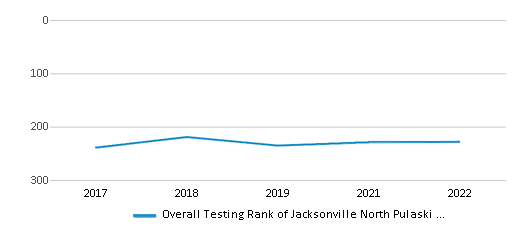
Math Test Scores (% Proficient)
17%
38%
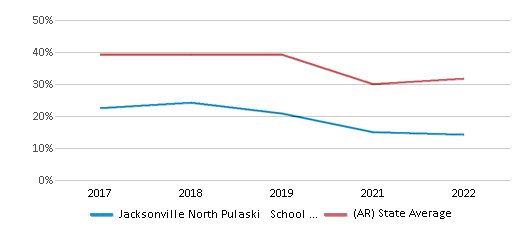
Reading/Language Arts Test Scores (% Proficient)
22%
40%
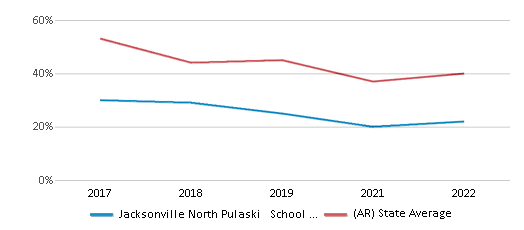
Science Test Scores (% Proficient)
18%
36%
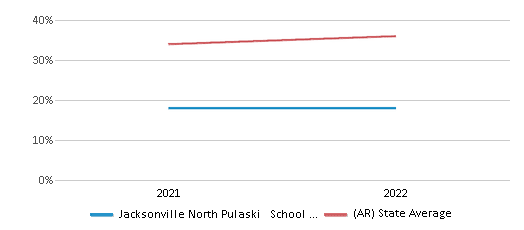
Graduation Rate
78%
88%
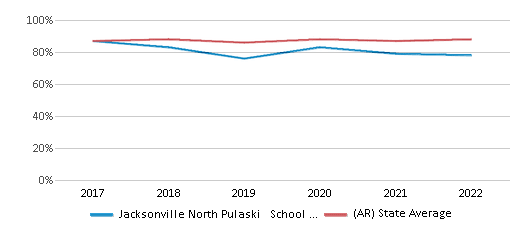
Students by Ethnicity:
Diversity Score
0.62
0.65
# American Indian Students
20 Students
304 Students
% American Indian Students
n/a
n/a
# Asian Students
33 Students
1,286 Students
% Asian Students
1%
2%
# Hispanic Students
423 Students
8,907 Students
% Hispanic Students
10%
14%
# Black Students
2,360 Students
15,458 Students
% Black Students
53%
24%
# White Students
1,322 Students
33,786 Students
% White Students
30%
53%
# Hawaiian Students
6 Students
433 Students
% Hawaiian Students
n/a
1%
# Two or more races Students
287 Students
4,044 Students
% of Two or more races Students
6%
6%
Students by Grade:
# Students in PK Grade:
277
10,082
# Students in K Grade:
318
11,994
# Students in 1st Grade:
378
10,563
# Students in 2nd Grade:
381
10,072
# Students in 3rd Grade:
341
7,942
# Students in 4th Grade:
328
6,793
# Students in 5th Grade:
334
5,152
# Students in 6th Grade:
289
1,597
# Students in 7th Grade:
321
22
# Students in 8th Grade:
319
-
# Students in 9th Grade:
337
-
# Students in 10th Grade:
305
-
# Students in 11th Grade:
276
-
# Students in 12th Grade:
247
-
# Ungraded Students:
-
1
District Revenue and Spending
The revenue/student of $13,977 is higher than the state median of $13,132. The school district revenue/student has declined by 10% over four school years.
The school district's spending/student of $16,594 is higher than the state median of $13,043. The school district spending/student has declined by 10% over four school years.
Total Revenue
$62 MM
$6,371 MM

Spending
$74 MM
$6,327 MM

Revenue / Student
$13,977
$13,132
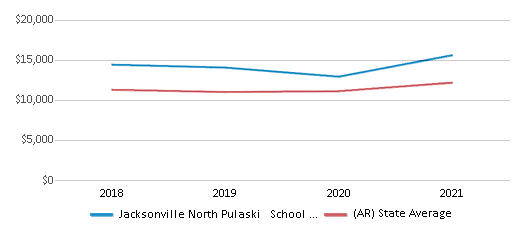
Spending / Student
$16,594
$13,043
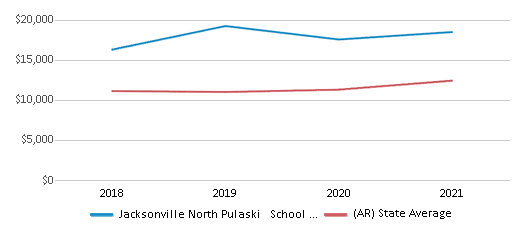
Best Jacksonville North Pulaski School District Public Preschools (2025)
School
(Math and Reading Proficiency)
(Math and Reading Proficiency)
Location
Grades
Students
Rank: #11.
Bayou Meto Elementary School
(Math: 25-29% | Reading: 25-29%)
Rank:
Rank:
3/
Bottom 50%10
26405 Hwy 107
Jacksonville, AR 72076
(501) 988-4131
Jacksonville, AR 72076
(501) 988-4131
Grades: PK-5
| 464 students
Rank: n/an/a
500 Cloverdale Rd
Jacksonville, AR 72076
(501) 982-3117
Jacksonville, AR 72076
(501) 982-3117
Grades: PK
| 217 students
Recent Articles

Year-Round Or Traditional Schedule?
Which is more appropriate for your child? A year-round attendance schedule or traditional schedule? We look at the pros and cons.

Why You Should Encourage Your Child to Join a Sports Team
Participating in team sports has a great many benefits for children, there is no doubt. In this article you will learn what those benefits are.

White Students are Now the Minority in U.S. Public Schools
Increasing birth rates among immigrant families from Asia and Central and South America, combined with lower birth rates among white families, means that for the first time in history, public school students in the United States are majority-minority. This shift in demographics poses difficulties for schools as they work to accommodate children of varying language abilities and socio-economic backgrounds.





